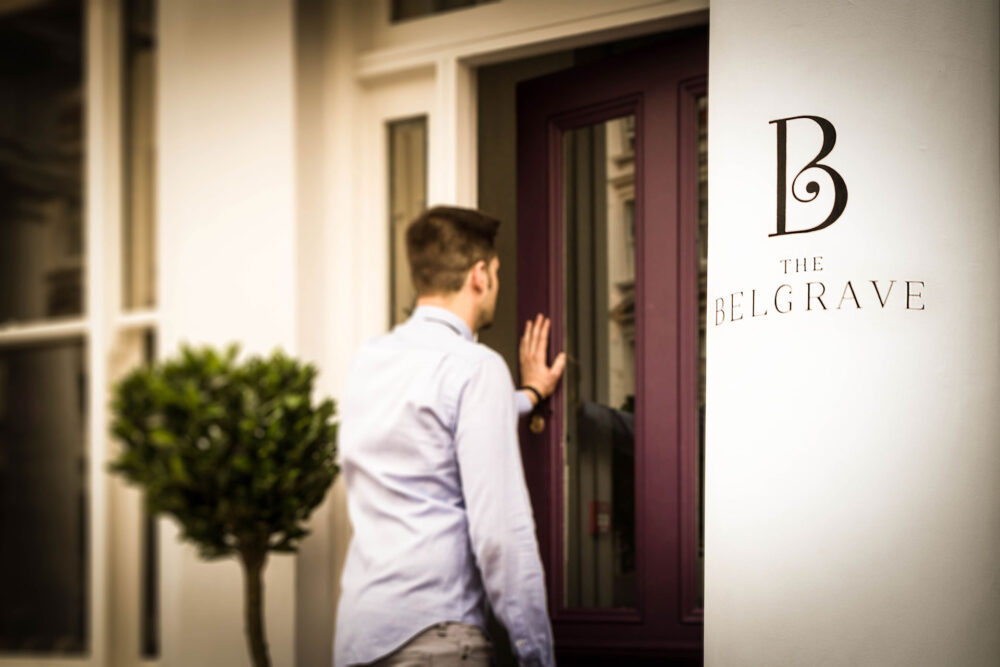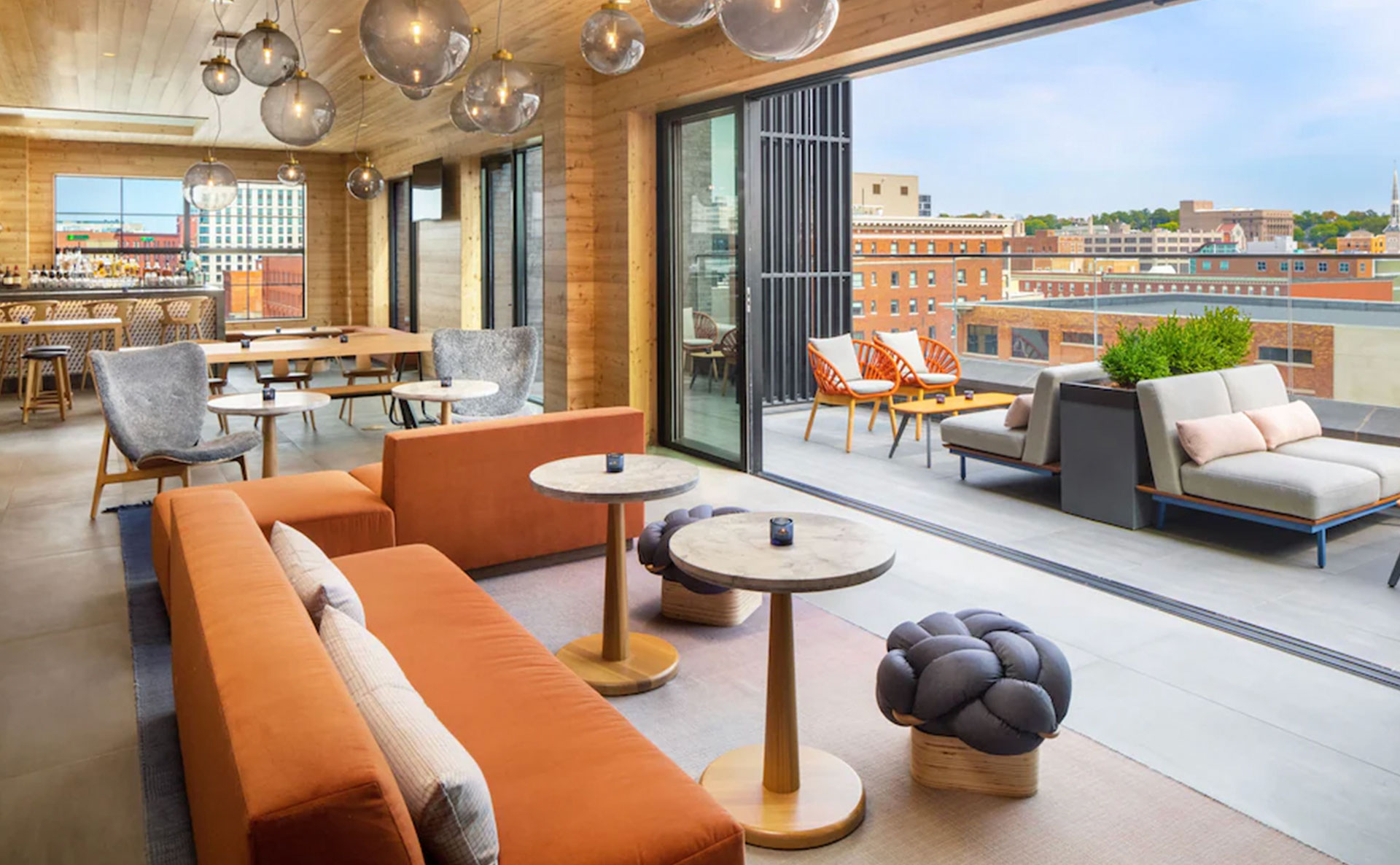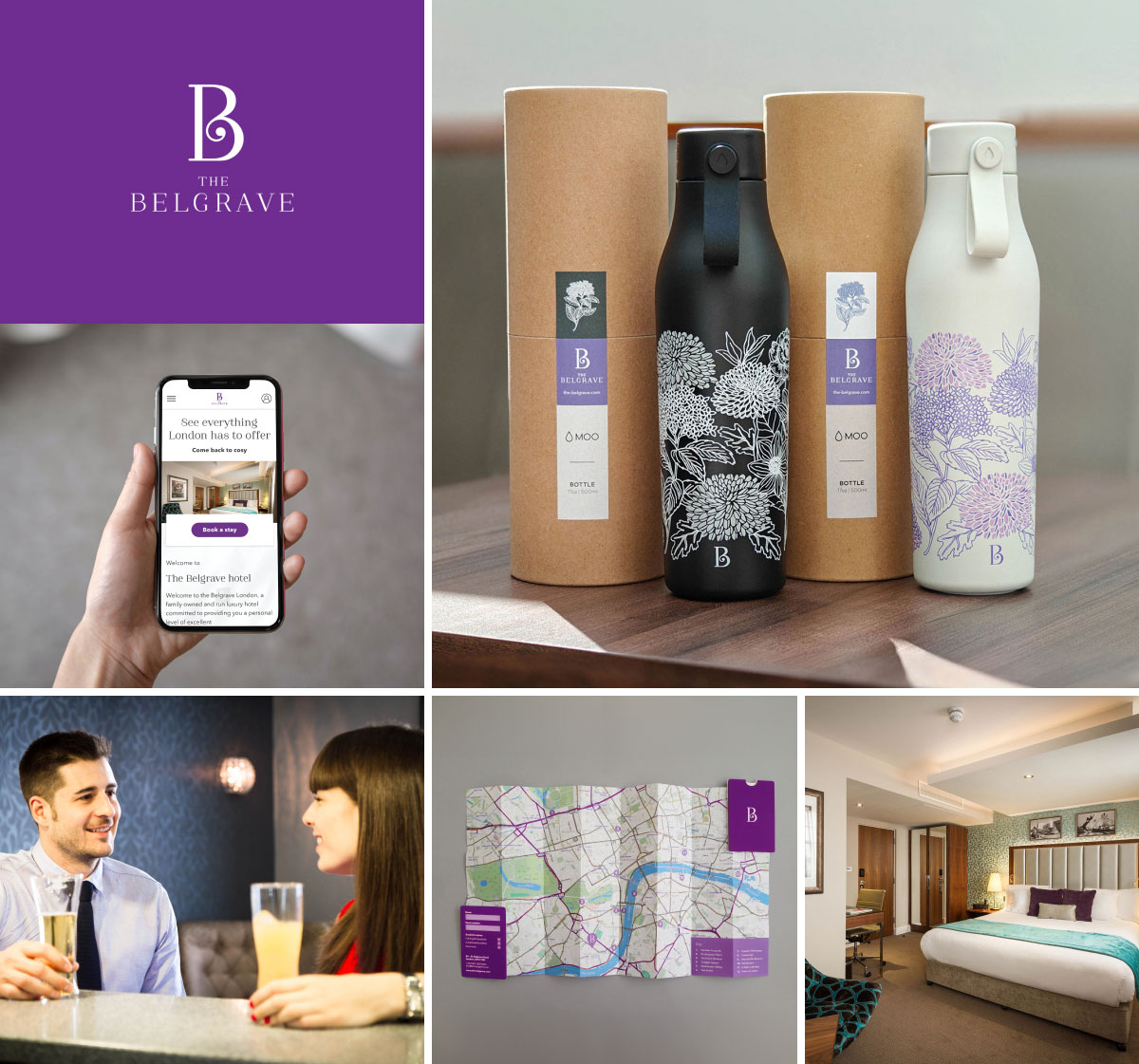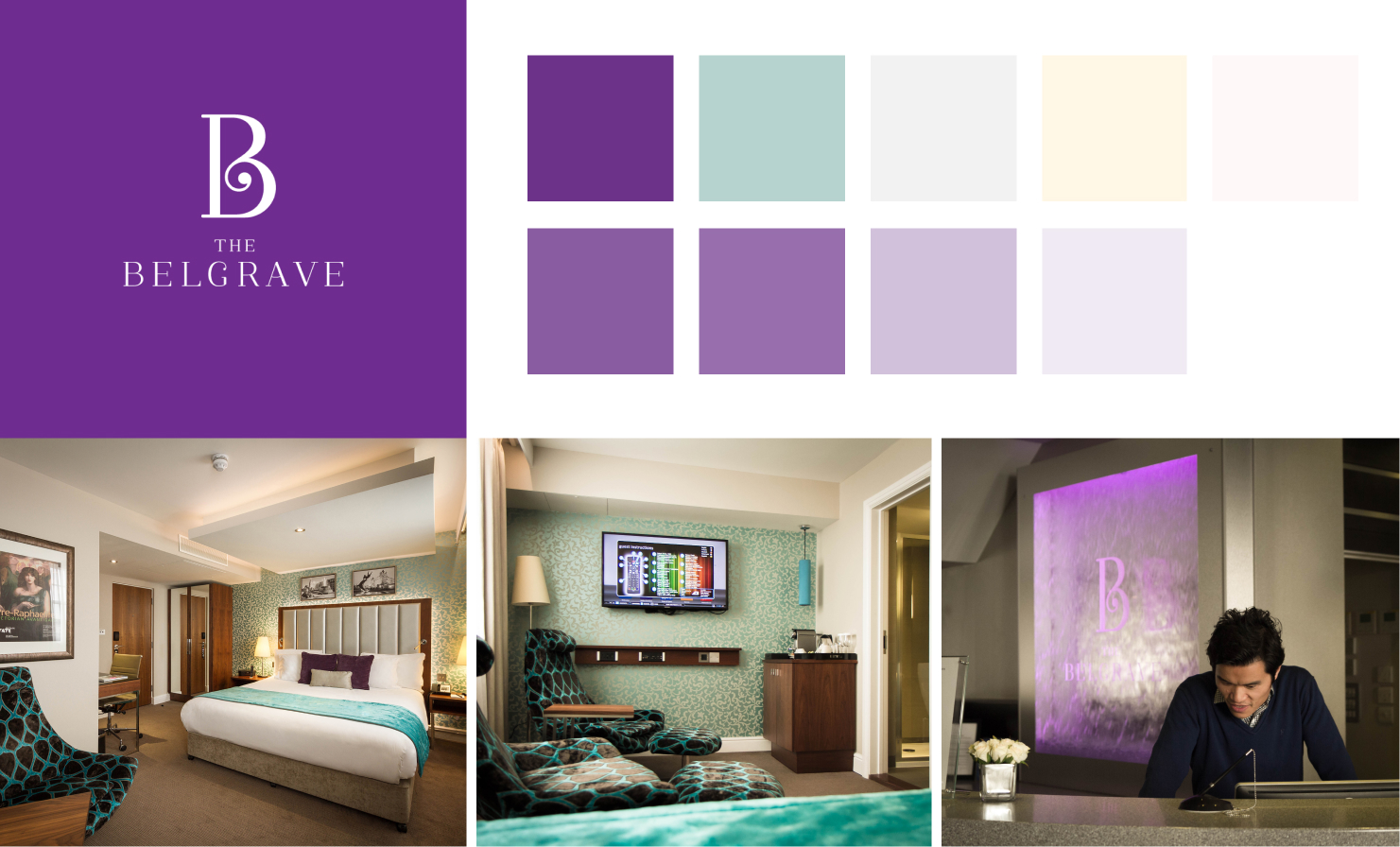Establishing a Unified Brand and Interior Design
When it comes to integrating a hotel’s brand identity with interior design to create a cohesive and memorable guest experience, it is very important to give it careful thought. In the hospitality sector, it is more than just about visual aesthetics; it involves crafting an interior and service environment where every detail is an opportunity to differentiate their identity and values from other competitors. Effective integration of the brand and interior design can allow the atmosphere to resonate emotionally with guests and enhance their overall experience or stay.
The guest’s emotional rapport with the hotel begins early in their user journey, where their first interaction is often through its website or social media and can form early opinions on what they can expect at the hotel. The hotel must be careful in maintaining consistency across digital marketing to set realistic expectations for guests and avoid false promises that may lead to cognitive dissonance.
When guests arrive at the hotel for their stay, their experience should match an environment that mirrors the online marketing where the interior design—lobbies, public areas and rooms—reflects the brand’s ethos. This doesn’t mean over-displaying the logo everywhere but subtly incorporating brand colours, materials, and textures consistently within what the guests see or interact with. Visual consistency can build trust, and guests can pick up on the hotel’s sense of detail and inform early opinions that the service will be equally attentive.
Spaces that echo the brand’s story can evoke specific emotions, turning a stay into a memorable experience that encourages repeat visits and word-of-mouth marketing.
Understanding the Target Audience
A successful hotel experience starts with understanding the target audience, which is about gaining insights and learning about the preferences of their expected customers. Whilst the list can be extensive and different for every hotel, we’ll use a couple of archetypes to illustrate an example:
- Modern travellers guests who might appreciate photogenic spots and shareable experiences.
- Business/digital nomads guests who seek adaptable working environments and business amenities.
To appeal to these modern travellers, hotels can employ strategies such as:
- Branded photo areas to encourage Instagram-worthy moments, like a green/flower wall or where people can pose for group photos to share social or keep for their memories
- Brand-associated mascots or plushies can be appealing gifts or toys that younger guests can take home. It can also be a source of merchandise for the hotel shop.
- AR/VR experiences like immersive virtual tours where a tech-savvy guest can browse to get a sense of the place.
- Influencer partnerships can be utilised to reach a broader base of target demographics, especially where their followers are more likely to visit based on a positive experience shared online and find new narratives about their stay.
- User-generated content is a testimonial extension of guest experiences; however, it is important to manage the service as it can also be used negatively. How issues are dealt with can make a big difference.
For business/digital nomad travellers:
- Hot-desk spaces, either in the room or around the hotel spaces, Wi-Fi should be readily accessible and advertised so that critical meetings or work can be undertaken without many barriers or interruptions.
- Convenient facilities should allow easy access to refreshments throughout the workday. This can also be an opportunity to cross-sell products.
- Workspace environment if the person is working, they should feel relaxed and undistracted within the hotel’s surroundings and also remain undisturbed whilst working.
Creating Visual Cohesion
As aforementioned, visual cohesion involves reflecting the brand identity consistently across physical and digital touch points. This could includes basic brand elements like the colour scheme, typography and materials that extend into each and every stage of the guest journey.
- Digital presence: The hotel’s website and social media should tie into the physical space’s aesthetic and vice versa. If a hotel approach is a minimalist, modern hotel with neutral furnishings, the website design and layout should, therefore, also feature clean lines, simple photography and a neutral colour palette.
- Marketing collaterals: Any media or collateral present across the hotel, from the menus to brochures, should maintain consistent use of brand colours and fonts to reinforce the brand guidelines and expectations the guests have built. It is important to work with design and print partners to follow the brand guidelines and not use a generic template.
- Signage and wayfinding: Signage should also follow the hotel’s brand guidelines.
- Interior design elements: From the lobby decor to room furnishings, the colours and materials should authentically represent the brand’s ethos values. A luxury hotel might use high-end materials like marble, while a boutique hotel might feature local artwork, and a green hotel might feature sustainable materials and real plants.
Building trust by being consistent
When a hotel’s branding and design are consistent, guests are less likely to subconsciously notice any jarring disconnect which will make it easier for the hotel to build trust. Maintaining consistency can reduce guest uncertainty and build familiarity, making them feel confident and comfortable.
- First impressions: The first impression a guest has is one of the most crucial touchpoints and one that usually sets the tone for the rest of their stay. The physical space they see will be their first go-to to solidify their early opinions formed online with what they are experiencing.
- Ongoing experience: The staff provide a majority of the guest experience, and they should also wear design elements consistent with the brand. As the guests explore further areas within the hotel, their experience should be consistently informed. For example, the hotel is decorated with calm brand colours and mood lighting, but then the gym area has a bright aesthetic or atmosphere. Even if the intention is to create a more energetic space, that vibrancy should still be informed by the brand guidelines, i.e. if the brand guidelines include using different design language across different spaces and equal sections on the website.
The promotional video we directed for The Belgrave shown below captures the variety of demographics that would visit the hotel; as well as highlight the activities in and outside the hotel.


Creating emotional connections
Forging emotional connections with guests can be done through thoughtfully designed spaces that allow the brand to tell a narrative. If this narrative is understood by the guests and evokes specific feelings, it can inform a lasting memory.
- Themed spaces: For example, hotels branded as tranquil retreats might be linked with stories about the organic qualities of nature or the environment, featuring muted tones, natural materials, and scents to create a calming and relaxing atmosphere.
- Personalised touches: Incorporating branding into welcome notes or digital greetings adds a personal touch that makes guests feel valued. In the same example above, these notes can be printed on wildflower-seeded paper, which they can take home and plant in the garden.
Engaging the senses for deeper connections
Beyond visual design, engaging multiple senses can enhance the emotional impact of a guest’s stay and is classed under atmospherics, where all the guests’ senses can be engaged in different ways. Many scientific studies concludes how odours can trigger memories, and how closely related the senses are with how our brains integrates and stores a deep and fundamental experience as memories.
- Scent: Signature fragrances can evoke emotions and create lasting memories. Many luxury hotels use distinctive scents that guests come to associate with comfort and familiarity.
- Sound: Curated soundscapes enhance the atmosphere in different areas, from soothing music in spas to background beats in bars.
- Touch: Textures and materials, such as soft linens or smooth marble, influence comfort and perception. Interactive design elements like touchscreens can also enhance engagement. The ambient temperature should be maintained for comfort.
- Taste: Culinary offerings reflecting local cuisine and culture can create memorable dining experiences and connect guests with the destination.
- Sight: Lighting around the hotel should draw the guests to certain areas and allow them to do what that area encourages. For example, a reading chair should have a light that is bright enough for reading.
The power of colour in shaping experiences
As an extension of the sense of sight, colours can also influence emotions, perceptions, and behaviours. It is the most obvious form of how a person detects something, as it’s the visual cortex that processes things first. Clever usage of colour can set the tone from the moment guests arrive and can be strategically deployed to enhance the atmosphere and align with brand identity.
- Psychological impact: Warm colours like red and orange energise social spaces, while cool colours like blue and green create calming environments.
- Cohesive identity: A versatile colour palette that integrates brand colours subtly across different materials and spaces helps maintain a consistent brand identity.
- Natural colours: Earthy tones and natural hues can evoke a sense of calm and connection to nature, particularly in eco-friendly or wellness-focused hotels.
- Practical uses: Colour can aid wayfinding and define zones within the hotel, such as distinguishing between social and private areas.
Conclusion
The evolving hospitality landscape demands that hotels should offer guests more than just a place to stay. So hotels that focus on the delivery of guest experiences, hotels can review whether their brand identity is integrated with their interior design to provide authentic, sensory-rich and memorable stays. Understanding their target audiences and setting and adapting to expectations will not only deliver better guest interactions but also help foster loyalty, ensuring a lasting impact in the competitive hospitality market.





